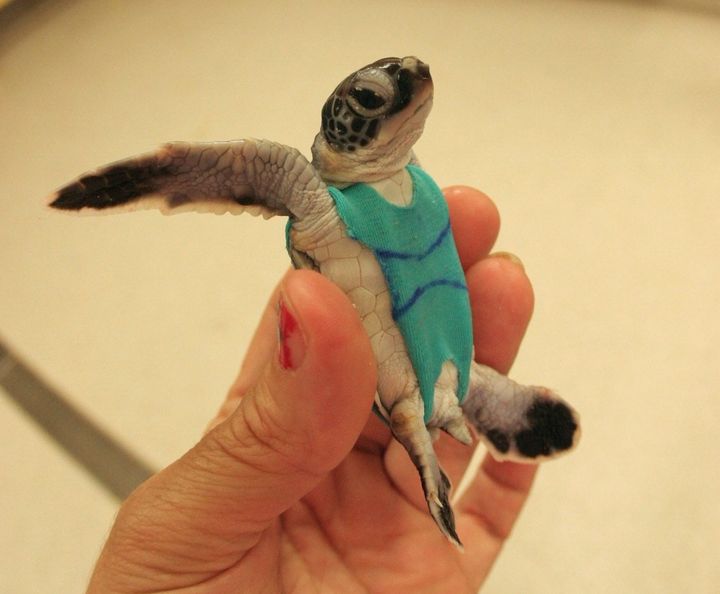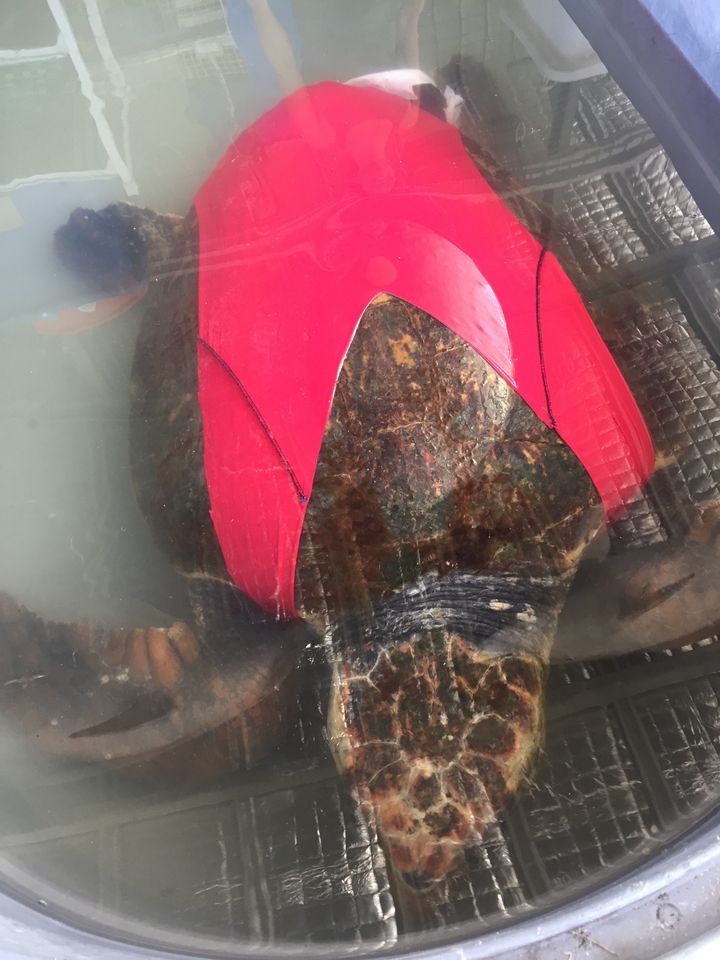How do researchers collect fecal samples from endangered sea turtles? They throw swimsuits and diapers on them and wait until they poop, obviously.
When faced with a poop-collecting predicament during a Ph.D. research project, two researchers with the University of Queensland’s School of Biological Sciences used old rash guards purchased at a thrift store to fashion custom-made swimsuits for the loggerhead turtles.

Owen Coffee, a Ph.D. student, was researching how to better protect the endangered species by understanding their feeding habits and locating their foraging areas.
At first, he and Carmen da Silva, a university researcher, kept the six wild loggerhead sea turtles in seawater tanks at UQ’s Moreton Bay Research Station and waited until they defecated, but “it was challenging to collect the entire fecal sample once it dispersed into the water,” Coffee said in a press release.
The swimsuits, Coffee told HuffPost, were designed to act as a harness for an existing device known as a “nappy” (Aussie slang for diaper), which fits over the turtle’s tail and collects fecal samples.
The "nappy," which is shaped like a cloth funnel, was attached to a hole at the tail-end of the customized swimsuit and held in place with Velcro.
“To our great surprise, it worked perfectly,” Kathy Townsend, the research station’s education coordinator, told UQ News.
“The suits were easy to put on, comfortable for the sea turtles to wear, looked great, and Coffee was able to collect the entire fecal sample.”

The researchers will use the fecal samples to identify what the turtles were eating in the hours before they were captured by the researchers, Coffee explained to HuffPost.
Then, using a method called stable isotope analysis, his team will determine what the loggerhead turtles were feeding on over a longer period of time, in order to see whether they are opportunistic eaters or only feed on specific things. Using this method, Coffee will also be able to identify where these loggerheads are searching for their meals.
Come late October, when the loggerheads begin their nesting season in southeastern Queensland, Coffee intends to take fecal samples from female loggerheads to find out where they traveled before nesting and whether certain areas produce a greater number of hatchlings.
“If so,” Coffee says, “we can ensure those areas are adequately protected in a bid to protect the species which are already endangered and still in decline.”
Rest assured, Coffee will continue to use the tried-and-true swimsuit method for all of his poop-collecting endeavors.
"I'll be using this swimsuit on all of them for sure," he told the Australian Broadcasting Company.
As soon as the researchers finish collecting samples, the turtles are released back into the wild. They are not able to take their bespoke swimsuits home with them, however.
Also on HuffPost:

